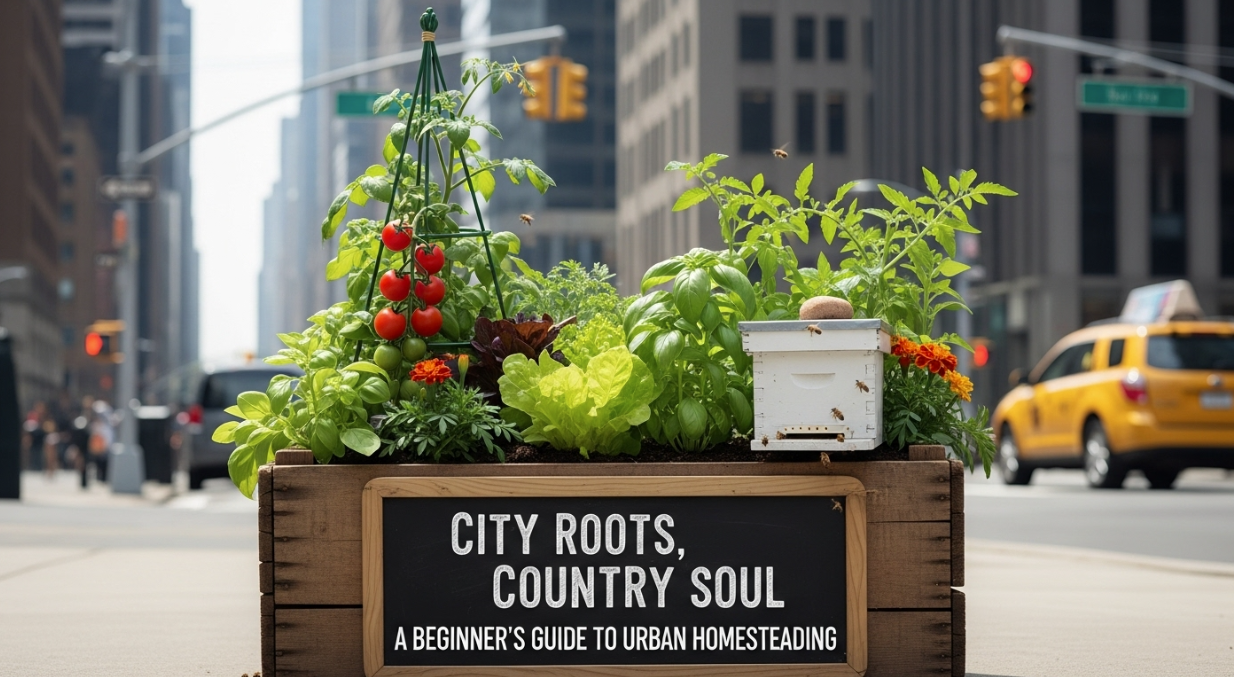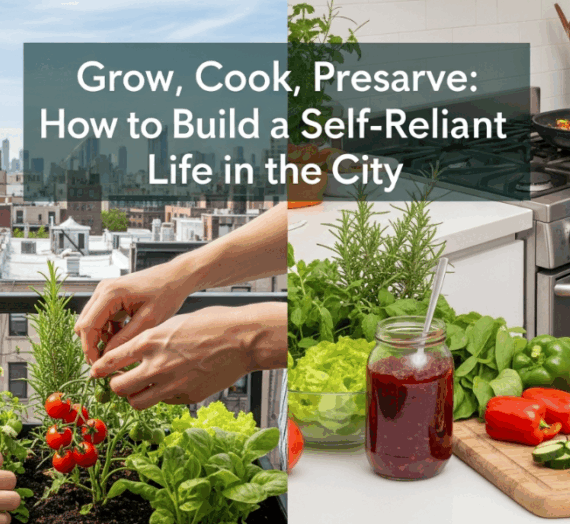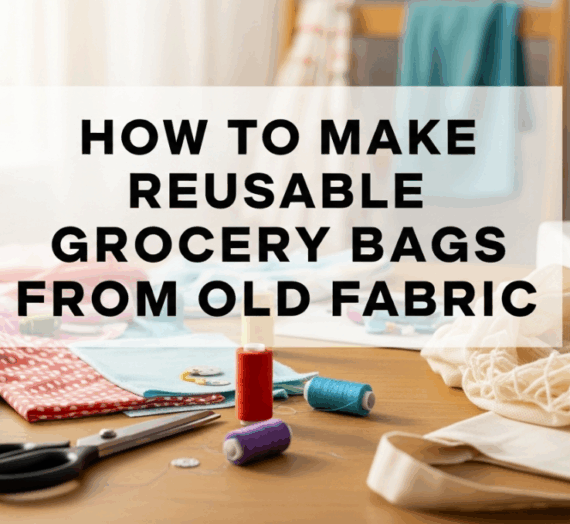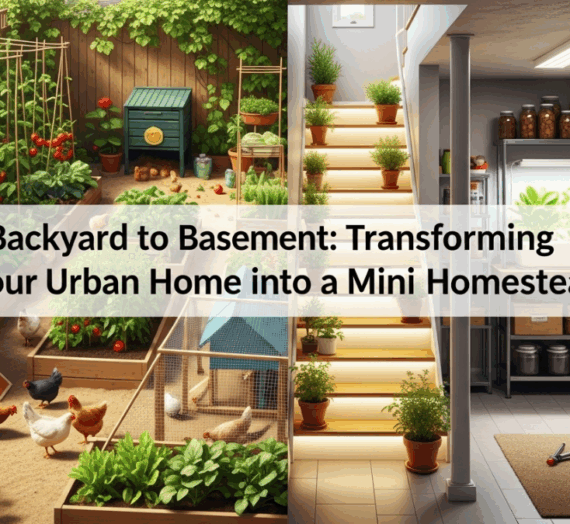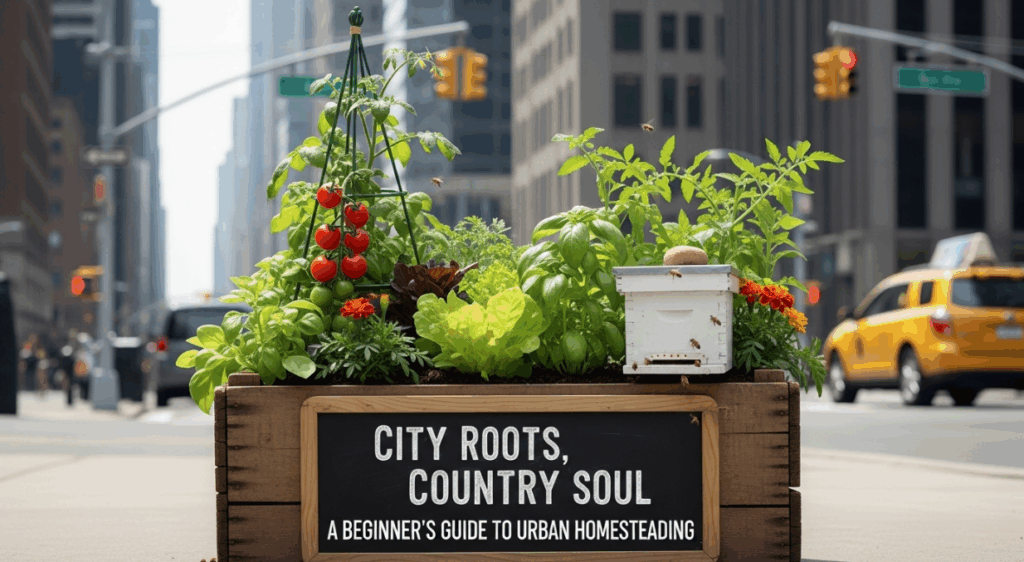
Introduction
Urban homesteading blends the best of rural self-sufficiency with modern city living. You don’t need acres of land or a barn full of animals to start living more sustainably you can cultivate a simpler, more intentional lifestyle right from your apartment, rooftop, or backyard. Whether you dream of growing your own food, preserving your harvests, or reducing your reliance on big-box stores, this beginner’s guide to urban homesteading will help you reconnect with your roots and build a fulfilling, eco-friendly life in the city.
What Is Urban Homesteading?
Urban homesteading is the practice of incorporating traditional homesteading skills such as gardening, food preservation, composting, and natural living into an urban or suburban setting. It’s about creating self-reliance and sustainability in small spaces, whether you live in a high-rise apartment or a compact city home. For further reading on urban sustainability practices, see related studies on Google or Bing search results.
The Modern Urban Homesteader’s Mindset
This lifestyle prioritizes quality over convenience. It values homemade over store-bought, and connection to the earth over consumerism. Urban homesteaders aim to reduce waste, grow their own produce, and embrace the slow, seasonal rhythms of nature all within a cityscape.
Start With Food: Growing What You Eat
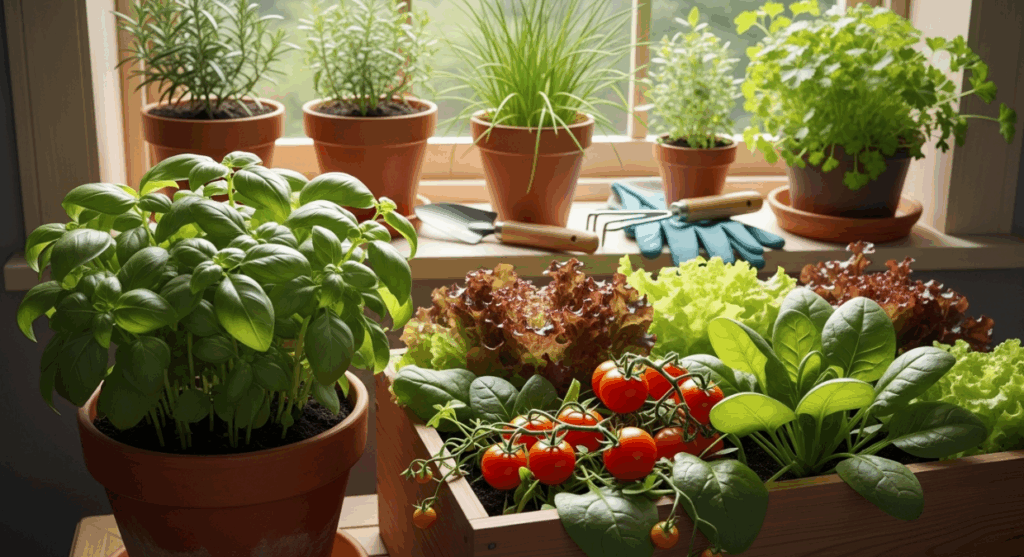

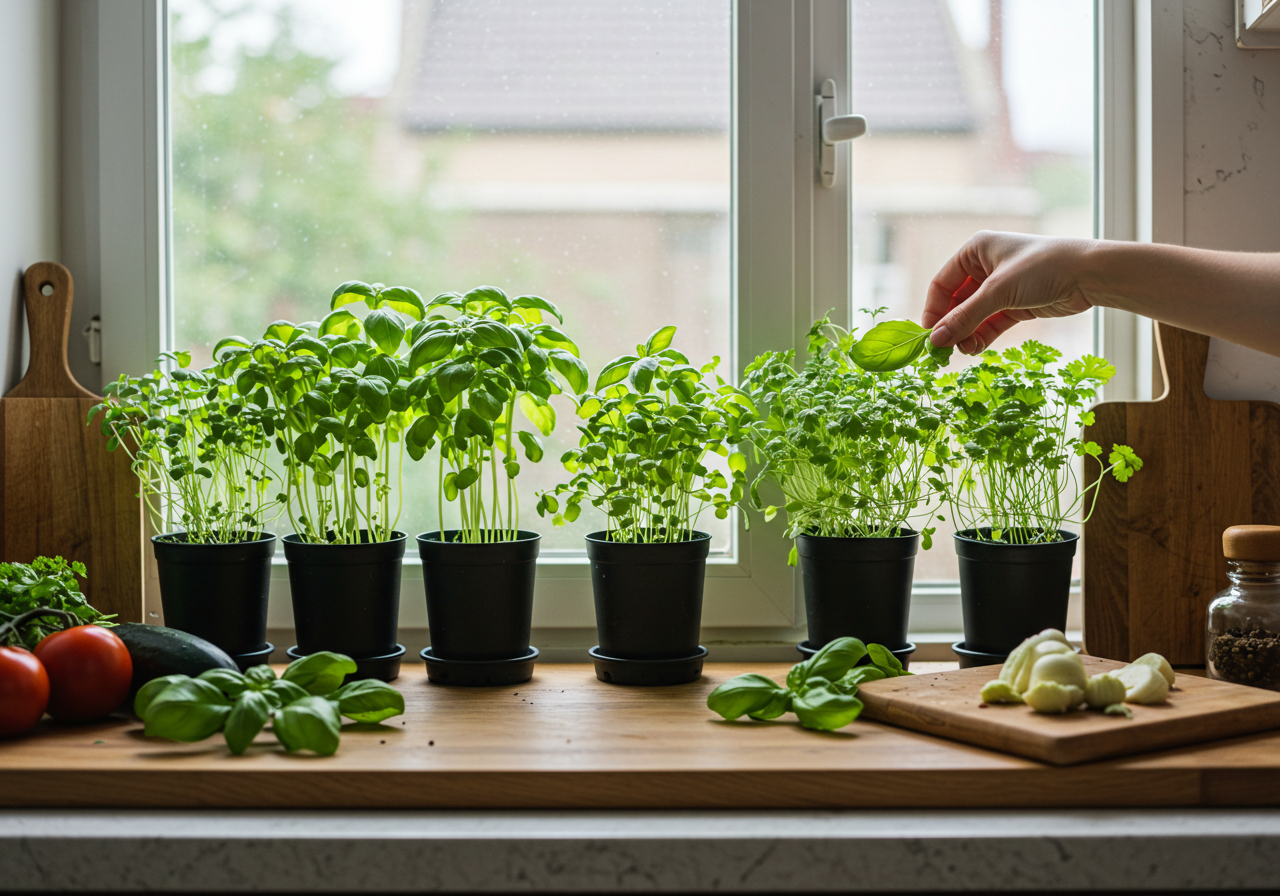

One of the easiest ways to begin homesteading is by growing your own food. You don’t need a large yard; container gardening, balcony pots, and even sunny windowsills can support fresh herbs, salad greens, or tomatoes.
Best Crops for Urban Gardens
Choose compact, high-yield plants like lettuce, kale, spinach, cherry tomatoes, radishes, and herbs like basil, mint, and chives. These grow well in containers and have a short time to harvest ideal for beginners.
Indoor and Vertical Gardening
If you’re short on space, vertical gardening systems or wall-mounted planters are excellent solutions. Consider indoor hydroponic kits for year-round growing of leafy greens and microgreens without soil.
Composting in the City
Composting turns your kitchen scraps into nutrient-rich soil. It’s an essential practice for any urban homesteader and can be done in small apartments using compact compost bins or worm farms (vermicomposting).
What to Compost
Fruit and vegetable scraps, coffee grounds, eggshells, and cardboard can all be composted. Avoid dairy, meat, and oily foods in indoor bins to prevent odor and pests. The result is free, rich soil for your plants and less landfill waste.
Preserving Your Harvest
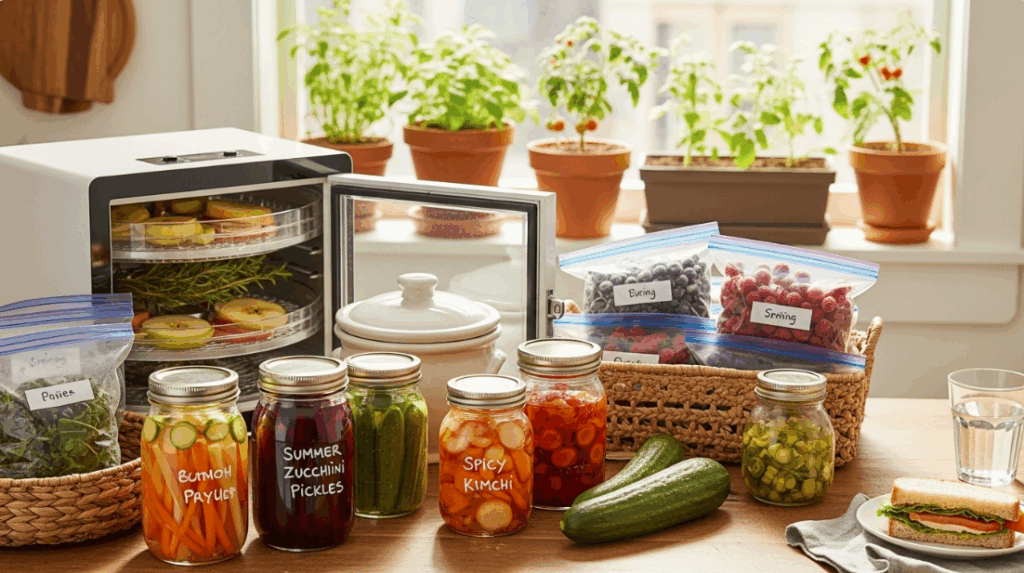


When your mini garden starts producing, food preservation ensures nothing goes to waste. Learning to can, freeze, ferment, or dehydrate your food is a key part of self-reliant urban living.
Canning Basics for Beginners
Water bath canning is ideal for acidic foods like tomatoes, jams, and pickles. It’s a low-cost way to stock your pantry with homemade goods. Always follow tested recipes to ensure food safety.
Other Preservation Methods
Dehydrate fruit slices for snacks, ferment cabbage into sauerkraut, or freeze extra herbs in olive oil for cooking. These methods extend your garden’s bounty throughout the year.
DIY Household Products
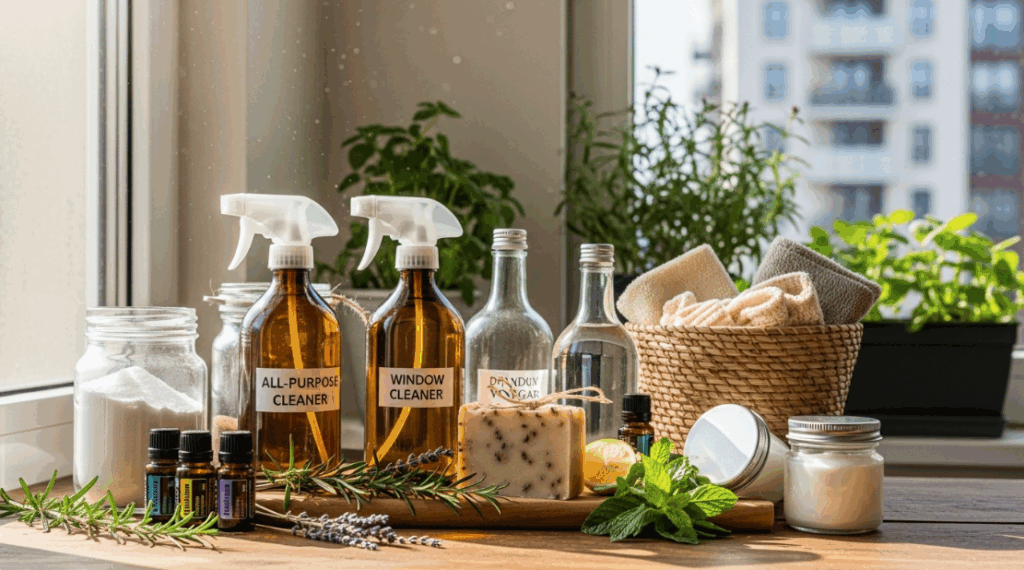
Urban homesteading includes reducing your dependency on store-bought, chemical-laden products. Making your own cleaners, soaps, and body products is easier than you think.
Simple Homemade Cleaners
Mix vinegar, baking soda, and essential oils for an all-purpose cleaner. Homemade cleaners reduce plastic waste and are safer for your health and the environment.
Raising Small Livestock (If Permitted)
In some urban areas, you can raise chickens or rabbits in your backyard. Chickens provide fresh eggs and natural pest control, while rabbits can be raised for manure and, optionally, meat.
Backyard Chickens 101
Check local ordinances before starting. A small coop can house 3–5 hens, which require daily feeding, water, and care. In return, you’ll get nutritious eggs and compostable bedding. For details on regulations, visit Google search on urban chicken keeping rules.
Water Conservation and Rain Harvesting
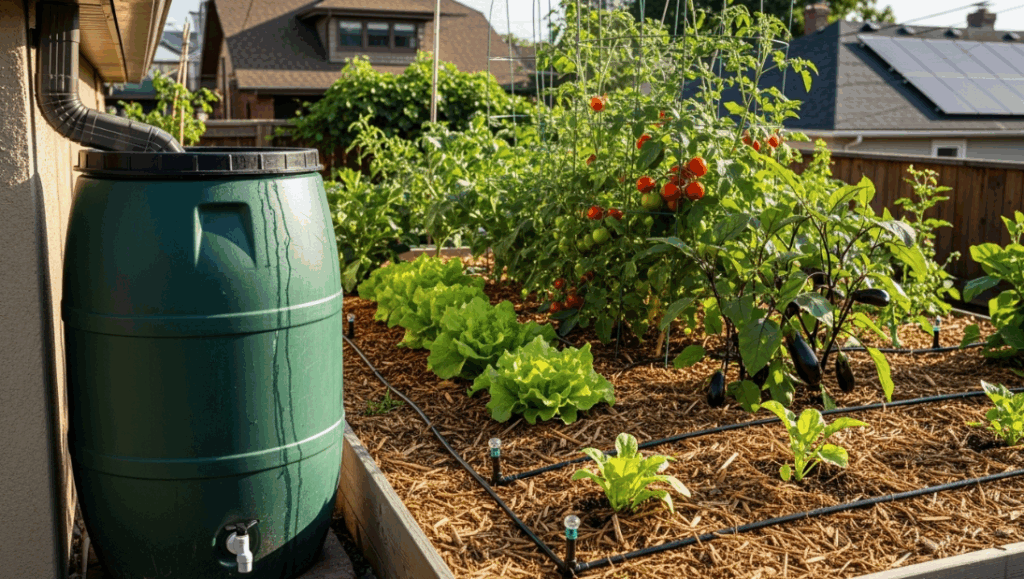
Urban homesteaders often install rain barrels to collect and reuse rainwater for gardening. Mulching garden beds and using drip irrigation can significantly reduce water waste while keeping plants healthy.
Greywater Reuse
With proper filtration, water from sinks or showers can be reused to irrigate ornamental plants. Greywater systems should be installed according to local guidelines for safety.
Living More Sustainably in the City
Urban homesteading isn’t just about growing food it’s a full lifestyle shift. Reducing single-use plastics, buying less, repurposing what you own, and choosing sustainable materials all contribute to this new way of living.
Community Connections
Join local gardening clubs, community gardens, or homesteading groups. Sharing resources, seeds, tools, and knowledge with others helps build a strong, self-reliant community.
Conclusion
Urban homesteading proves you don’t need to live on a farm to grow your own food, preserve your harvest, and live more sustainably. Whether you’re gardening on a windowsill or composting in your kitchen, each step you take toward self-reliance brings you closer to a more intentional, rooted lifestyle. Start small, keep learning, and watch as your city home transforms into a modern-day homestead one step at a time.
| Urban Homesteading Aspect | Key Points | Tips |
|---|---|---|
| Growing Food | Container gardening, vertical gardening, compact crops | Use sunny windowsills, balcony pots, and hydroponics |
| Composting | Kitchen scraps turned to soil, vermicomposting | Avoid dairy/meat indoors to prevent pests |
| Food Preservation | Canning, freezing, fermenting, dehydrating | Follow tested recipes for safety |
| DIY Products | Homemade cleaners and soaps | Mix vinegar, baking soda, essential oils |
| Small Livestock | Chickens and rabbits in urban areas | Check local regulations before starting |
| Water Conservation | Rain barrels, mulching, greywater reuse | Install according to local safety guidelines |
| Sustainable Living | Reduce waste, repurpose, community involvement | Join local gardening or homesteading groups |
